On October 26, 2021, the Belt and Road Initiative International Green Development Coalition (BRIGC) launched the second phase report of the Green Development Guidance – also known as the Traffic Light System for financial institutions and developers. The event included opening remarks by several ministers including China’s Minister of Ecology and Environment Huang Runqiu, and several other presentations.
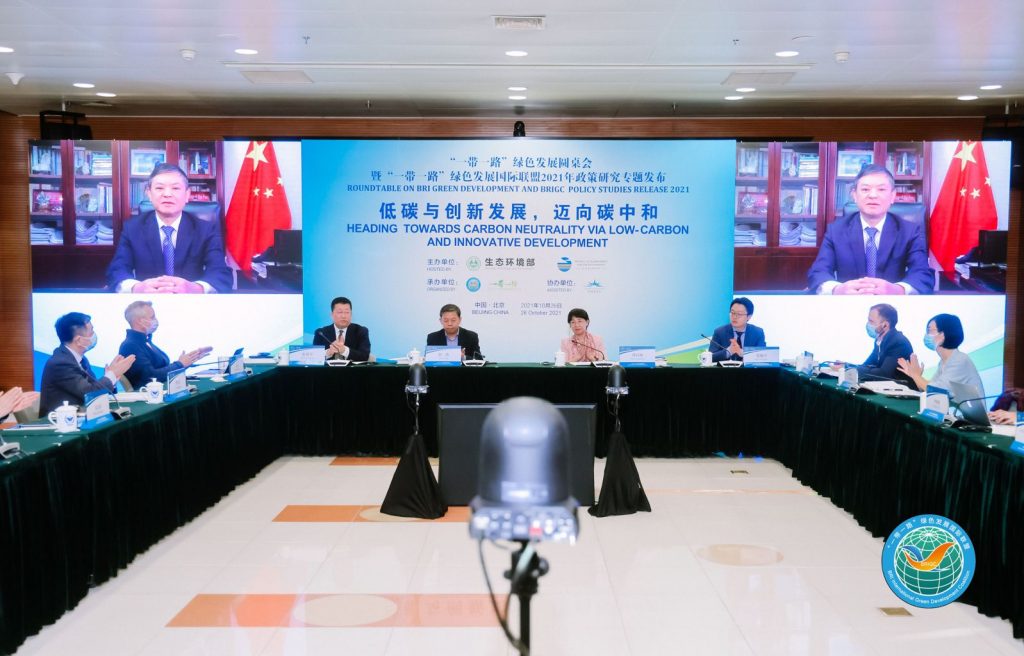
The second phase of the Green Development Guidance focuses on how financial institutions and developers can implement the traffic light system and the 9 recommendations of the Green Development Guidance published in December 2020, as well as a sector guidance for environmental risks in the transport infrastructure.
Through the application of the Green Development Guidance, BRI projects should not only have fewer environmental risks but also attract more international financing through tri-partite cooperation for BRI projects to accelerate the green transition of BRI countries.
About the Green Development Guidance – Traffic Light System for BRI Projects.
Ensuring that infrastructure projects in China’s Belt and Road Initiative (BRI) are reducing environmental risks and contributing to a green transformation requires consolidated efforts investors, project developers, and of regulators in China and BRI countries.
One important aspect to accelerate greening the Belt and Road Initiative and to accelerate green finance more generally is a common definition what is green – and what not, and how to evaluate and implement green projects.
To this end, the Belt and Road Initiative International Green Development Coalition (BRIGC) with support of the Chinese Ministry of Ecology and Environment (MEE) issued the “Green Development Guidance for BRI Projects Baseline Study” with the traffic light system in December 2020. The Traffic Light System allows to evaluate all projects for their environmental risks and contributions in the three environmental dimensions of pollution, climate and biodiversity.
As a result, the traffic light system distinguishes between
- Green projects that contribute positively to at least one environmental dimension and does no significant harm on any environmental dimension
- Yellow projects that have neither significant positive nor negative environmental contributions or risks
- Red projects that contribute negatively to at least one environmental dimension (no matter whether the project also contributes positively in another dimension. For example, this effectively puts “clean coal” on the red project list due to the negative climate impacts).
To accommodate for local conditions and the specific design and implementation of the project, the traffic light system included an important innovation: the traffic light system evaluates projects through a two-phased evaluation approach. After the initial evaluation of the project type, “red” projects can be “upgraded” depending on the applied safeguards and mitigation measures if they effectively reduce any environmental risks of this project under the local circumstances.

As an example, hydropower projects are categorized as “red” due to the high risks on biodiversity when flooding large areas. However, if the hydropower project is implemented using relevant standards (e.g., IFC Performance Standard 6 on biodiversity), a hydropower project would be categorized as “red-green” as it contributes to a zero-emission energy system.
While the Green Development Guidance with the traffic light system and its 9 recommendations has provided a common language for project developers, investors, as well as Chinese and local regulators, its implementation for project developers and financial institutions requires a specific guidance.
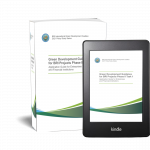
Accordingly, the implementation guide published in October 2021 provides information for financial institutions and project developers how to apply the traffic light system and the 9 recommendations of the Green Development Guidance.
Implementation Guide for Financial Institutions
Financial institutions have a strong interest in reducing environmental risk when giving loans to project developers, particularly in countries with weaker local environmental governance. Accordingly, financial institutions should incentivize, support and oversee the implementation of the traffic light system both with its clients (the project developers) and within its own organization through integration of a sound environmental and social risk management (ESRM).
The implementation guide provides guidance for financial institutions how to integrate the green development guidance in the project finance life-cycle. In practice, financial institutions can support the reduction of environmental risks by applying the Green Development Guidance throughout the whole project – from project initiation to project implementation, management, reporting and de-commissioning through differentiated conditions. Key points include:
- Establish an exclusion list of projects, such as coal-related projects
- Require environmental impact assessment (EIA) based on international standards for red projects, including independent evaluations
- Apply differentiated financing conditions, where red projects receive higher interest rates loans, while red-green and green projects would receive the lowest interest rates
- Require an environmental and social risk management system within the project company including regular reporting to the financial institution
- Establish a grievance redress mechanism to learn about environmental issues earlier and not only through the project
- Use covenants to be able to address environmental management directly in the project
- Require public environmental reporting
- Enhance international cooperation
How different types of projects (green, yellow, red, red-green and red-yellow) should be treated by financial institutions, e.g. for reporting requirements or financing conditions, is shown in the table below.

Implementation Guide for Enterprises
Enterprises are a key player of BRI project construction. The Application Guide helps enterprises that are planning, implementing and operating BRI projects to identify, evaluate, manage, and improve the project’s environmental performance across the aspects of climate, environment, and biodiversity.
The implementation guide therefore stresses the following aspects:
- Information collection of environmental risks and opportunities
- Classification of projects according to the two-step approach (either use existing taxonomy of the 2020 Traffic Light System, or apply own evaluation based on described project categorization – see figure below). The implementation guide also includes a detailed questionnaire for self-categorization
- Assess the available mitigation and compensation mechanisms for red projects to reduce residual environmental risks

The implementation guide also looks at possible strategies to reduce environmental risks in both developers and financial portfolios, e.g., to have 100% of projects not in the red category by 2030.

Implementation for Policy Makers
Finally, the publication also includes recommendations for policy makers and related parties, which should give an indication for the future development and application of the Traffic Light System:
- Promote the application of the Green Development Guidance between different authorities and parties
- Enrich the Green Development Guidance Content, for example with further sector guidances, while also improving the upgrade/downgrading of projects from red to green and vice versa (e.g. malpractice in solar power)
- Support green development in BRI project host countries, particularly through better environmental and social risk management practices
- Enhance collaboration at international and local level, e.g. by helping to set up green project databases.
Summary and next steps
Overall, the Green Development Guidance Implementation Guide provides a solid and relevant framework for implementing the Traffic Light System and accelerating green development of the Belt and Road Initiative. Along the 9 recommendations and the evaluation, it clearly indicates actions and consequences depending on the environmental risks (see the following graph).

As the next step, it is important to accelerate the implementation of the Green Development Guidance and the Traffic Light System for BRI Projects, particularly through
- Agreement among different policy makers in China and internationally in the BRI to accelerate the use and implementation of the Guidance with all its options and risk mitigation factors;
- Accelerate collaboration with financial sector players in China and internationally to expand the use of the common language on green finance to enable co-financing and tri-partite cooperation for a green economic transition in the BRI and beyond;
- Capacity building for financial institutions in China to further include environmental risk considerations into financial decision-making, particularly climate and biodiversity (as well as social factors)
- Capacity building for BRI host country institutions to apply the Traffic Light System and accelerate the investments into green projects and di-vestment from red projects. This should also include the creation of enabling factors and policies (e.g. phase-out of harmful subsidies for fossil fuels and stable/supportive policy environment for green projects).
About the supporters and authors
The second phase or the Green Development Guidance was supported by the Foreign Environmental Cooperation Center (FECO) of the Ministry of Ecology and Environment, the World Resources Center (WRI), ClientEarth, and Children’s Investment Fund Foundation (CIFF).
The authors include Wang Ye (WRI), Christoph Nedopil, Wenhong XIE (Climate Bonds Initiative), Dimitr de BOER (Client Earth), Shuang LIU (WRI), LI Yonghong (FECO/Ministry of Ecology and Environment), LAN Yan (BRIGC/Ministry of Ecology and Environment), ZHU Yuan (BRIGC/Ministry of Ecology and Environment), YU Xiaolong (BRIGC/Ministry of Ecology and Environment), and LI Panwen (BRIGC/Ministry of Ecology and Environment).
Dr. Christoph NEDOPIL WANG is the Founding Director of the Green Finance & Development Center and a Visiting Professor at the Fanhai International School of Finance (FISF) at Fudan University in Shanghai, China. He is also the Director of the Griffith Asia Institute and a Professor at Griffith University.
Christoph is a member of the Belt and Road Initiative Green Coalition (BRIGC) of the Chinese Ministry of Ecology and Environment. He has contributed to policies and provided research/consulting amongst others for the China Council for International Cooperation on Environment and Development (CCICED), the Ministry of Commerce, various private and multilateral finance institutions (e.g. ADB, IFC, as well as multilateral institutions (e.g. UNDP, UNESCAP) and international governments.
Christoph holds a master of engineering from the Technical University Berlin, a master of public administration from Harvard Kennedy School, as well as a PhD in Economics. He has extensive experience in finance, sustainability, innovation, and infrastructure, having worked for the International Finance Corporation (IFC) for almost 10 years and being a Director for the Sino-German Sustainable Transport Project with the German Cooperation Agency GIZ in Beijing.
He has authored books, articles and reports, including UNDP's SDG Finance Taxonomy, IFC's “Navigating through Crises” and “Corporate Governance - Handbook for Board Directors”, and multiple academic papers on capital flows, sustainability and international development.
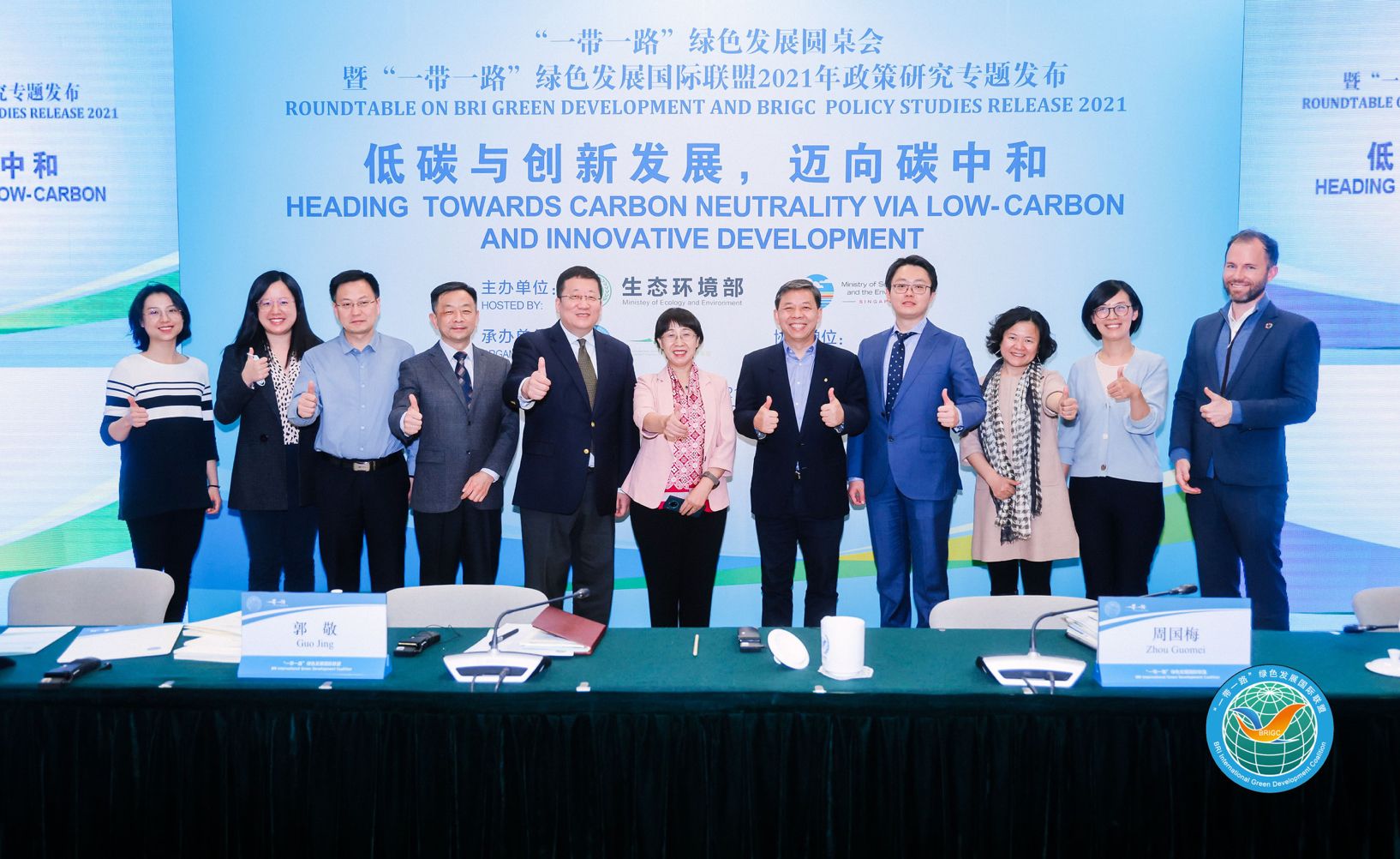


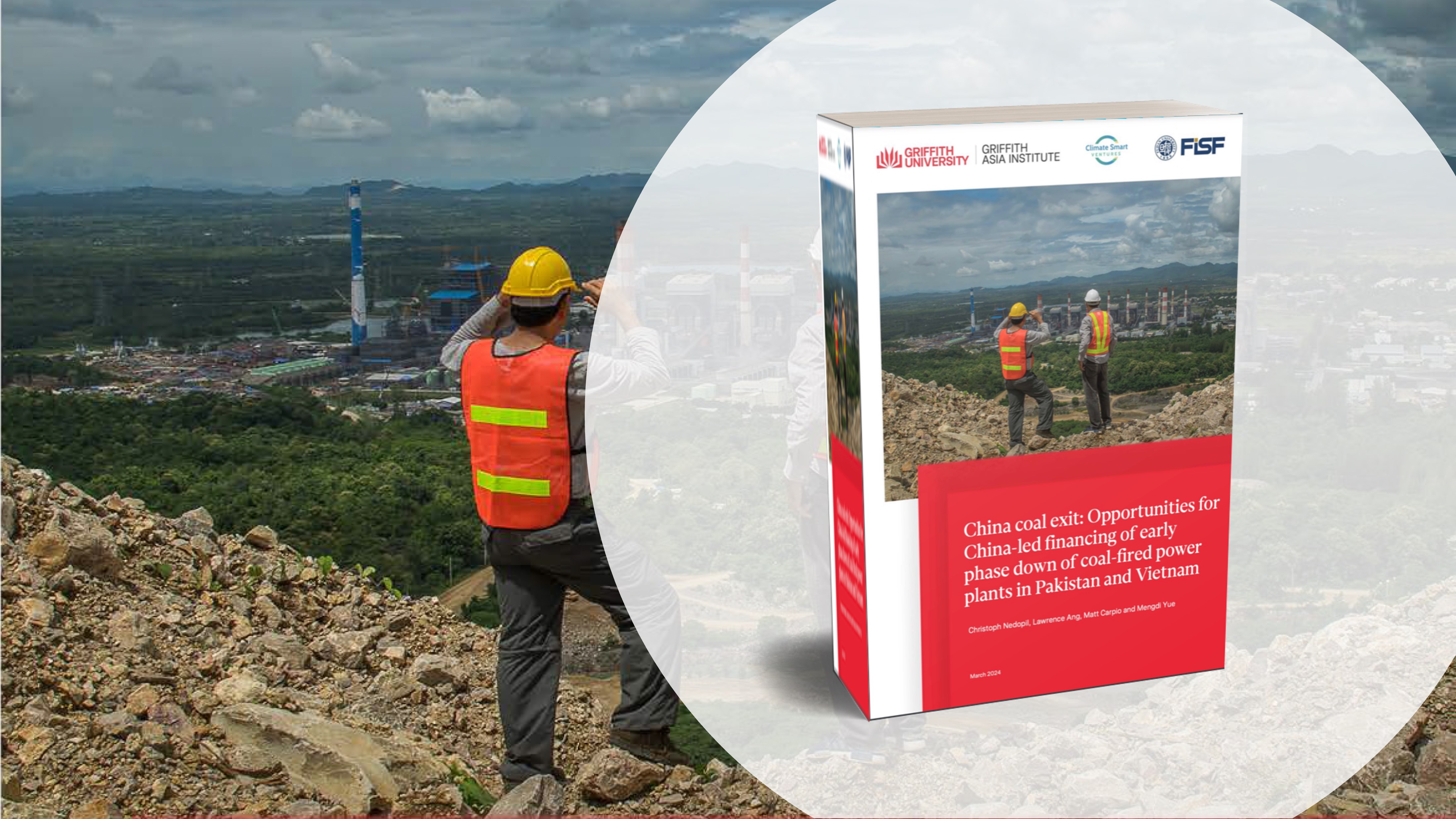
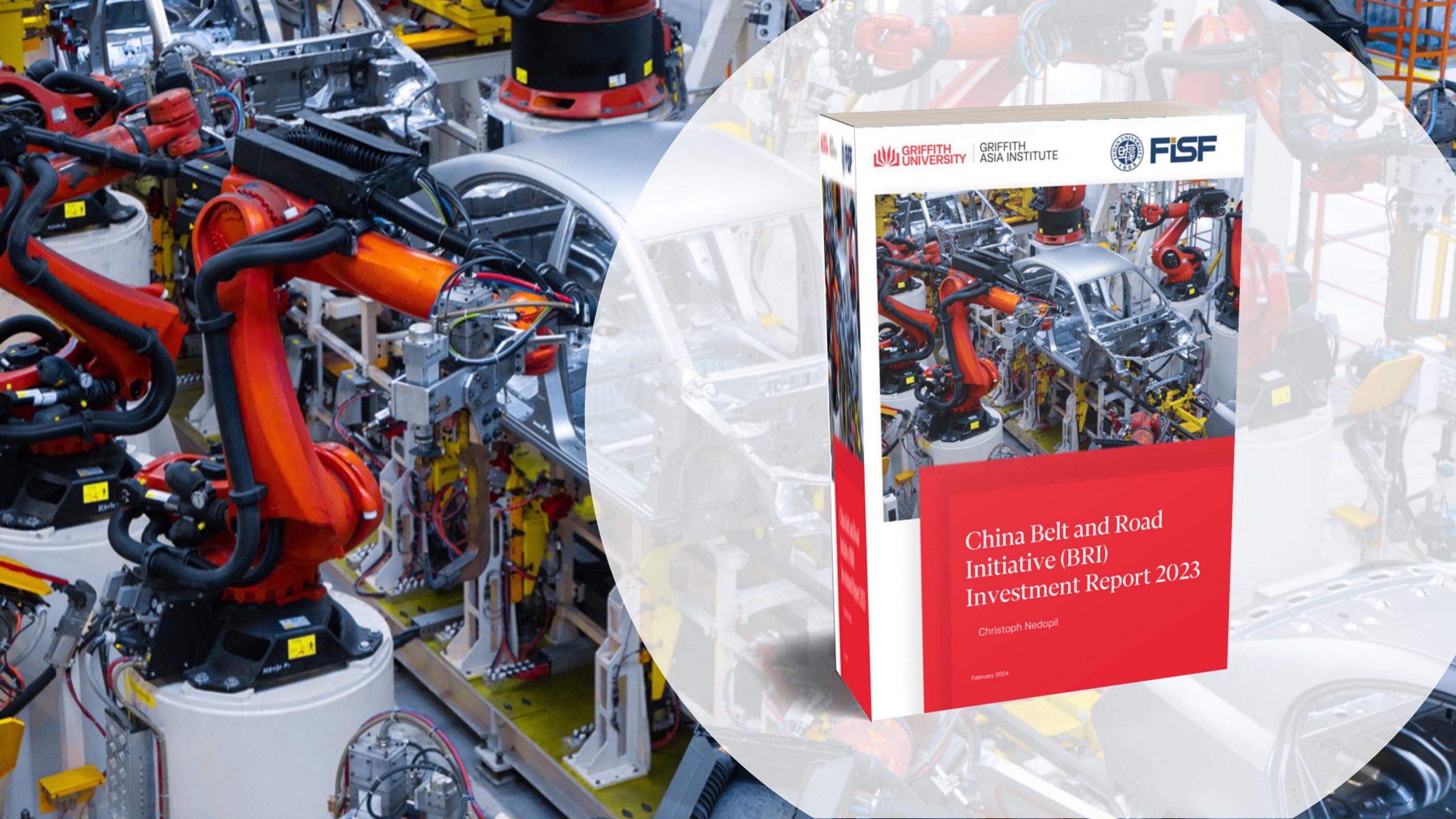
Comments are closed.